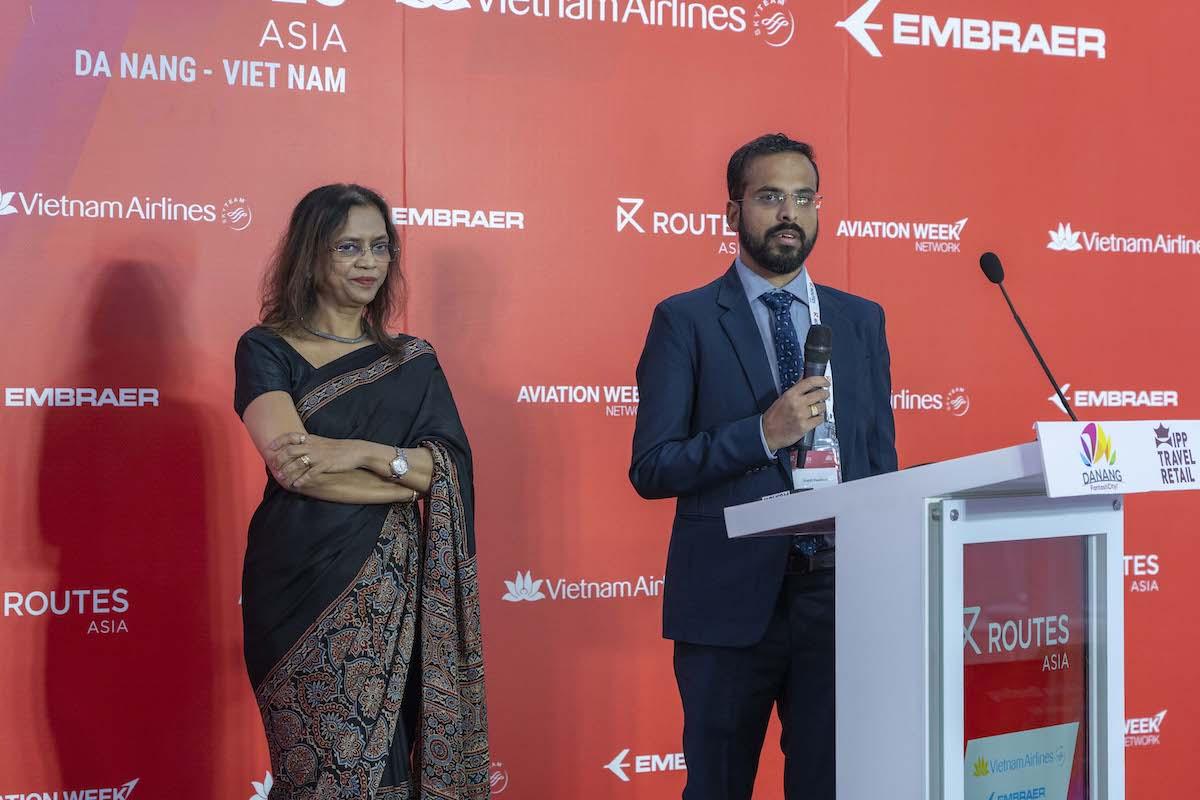
Air India plans to open multiple hubs across India over the coming years to help capture the surging demand in the country’s domestic market and drive an ambitious international expansion strategy under new owner Tata Group.
The airline, which was acquired by the conglomerate in January, currently operates a primary hub in Delhi (DEL) and a secondary hub in Mumbai (BOM).
But speaking at Routes Asia 2022 in Da Nang, the carrier’s general manager of commercial strategy and planning Purnima Nerurkar said Air India’s new parent intends to open several new regional hubs across the country, with the ambition of becoming “the largest hub carrier in the region.”
“Air India has the strategy already in place where we have a hub at Delhi for all our long-haul and our short-haul markets,” she said. “This is expected to grow because, going forward, our management’s thought and vision is to … create several hubs in India, which would facilitate growth from each of the regions.”
According to data provided by OAG Schedules Analyser, Air India is the fifth largest player in India’s domestic market during June 2022, with a 7.6% capacity share of all departure seats. LCC IndiGo is the largest, commanding 55.4%, followed by Go First on 9.9%, SpiceJet on 9.2% and Vistara on 8.4%.
Overall, Air India is offering almost 1.1 million domestic seats during the month, compared with 1.7 million this time in 2019. The airline’s international capacity has also recovered to about 82% of pre-pandemic levels.
Nerurkar said: “We have a lot of important points in India, which are the source markets for a lot of our long-haul markets. So, it's important that we capture this traffic, and we give this traffic the right support that it requires and facilitate the growth within India. So, where there is a requirement for hub, we are looking at multiple hubs in India.”
Air India and LCC subsidiary Air India Express were bought by the Tata Group for almost $2.4 billion in January, bringing to an end a years-long attempt to sell the businesses by the country’s government. Tata already had an interest in India’s commercial aviation market through a majority stake in Vistara and has recently completed the acquisition of domestic operator AirAsia India.
Since the takeover, Nerurkar said Air India has already seen “huge transformations” in the way the business operates, which includes reassessing its network strategy and partnerships with other carriers.
She explained that the Star Alliance member is seeking to expand the number of codeshare and interline agreements it has in place in order to broaden its international network.
Also speaking at Routes Asia, Tata senior manager Jinesh Papdiwal said that Air India already serves 50 domestic destinations but want to increase the number to 200. Through codeshares and partnerships, the airline also serves 75 international destinations, but hopes to grow to more than 125 points.
“We have seen the Indian market being catered to by one-stop product for a long time now,” Papdiwal said. “It is time with the new management and the new vision to take back the market to direct offerings so that our customers have options and direct offerings to take them to their destinations.
“With that in mind, we’ve tried to think of what our core markets are and how do we grow there. North America is an important market for us, and we see in the next few years with our expansion plans, we will be tripling our capacity into North America.”
Papdiwal added that Air India wants to double capacity to Europe, the Middle East, Africa and Central CIS countries, as well as ramping up operations to Australia and markets in Southeast Asia and Far East Asia.
“We’ve already defined a network strategy and synergies with that will help us in evaluating routes more favorably,” he said.
